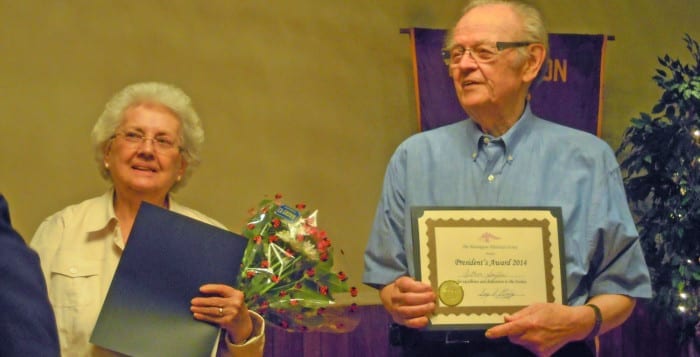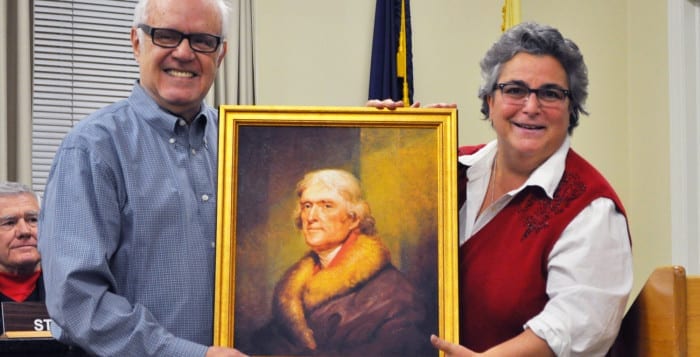The story of Sept. 11, 2001 will live on through the eyes of emergency responders who witnessed the tragedies up close, thanks to a program based out of Stony Brook University.
Benjamin Luft, MD, the Edmund Pellegrino professor of medicine at Stony Brook University School of Medicine and director of the Stony Brook WTC Wellness Program, announced on Dec. 22 the donation of the first installment of a collection of oral histories provided by 9/11 World Trade Center responders to the Library of Congress’ American Folklife Center. The Center will become the permanent home of the collection, known as the “Remembering 9/11 Oral History Project.”
Luft, along with colleagues, established the project by recording the histories of responders who attended the Stony Brook WTC Wellness Program, which cares for some 6,900 responders. After hearing many moving stories from his first responder patients, Luft said he came to believe that their experiences should be part of the nation’s history. In 2009, he and colleagues then began to record some their patients’ stories as oral histories.
By 2011, the Library of Congress formally expressed interest in serving as the repository for the collected oral histories and other documentation created by the project, which included stories from police officers, firefighters, paramedics, construction workers and others who worked at Ground Zero after the attacks. The project was featured on a special edition of the CBS news program “60 Minutes,” called “Remembering 911,” on the 10th anniversary of 9/11.
“It is such a privilege for me to act as a conduit and be able to gift to the Library of Congress, our national repository of knowledge, our first 200 interviews with those who responded to the horrific attacks of 9/11,” Luft said.
Luft also thanked both U.S. Reps. Steve Israel (D-Huntington) and Peter King (R-Seaford) for supporting the project, “from which the first installment of oral histories comes at a time of great anxiety considering the recent repeated terrorist attacks on our soil and elsewhere in the world.”
“No one else had the first-hand experience of being at Ground Zero on 9/11 quite like our brave first responders — their memories of that day will always be with them,” said Israel, who helped facilitate the collaboration with the Library of Congress. “Now thanks to the work of Dr. Benjamin Luft, who has collected the stories of our heroic responders, their memories will be preserved as part of the Library of Congress as a permanent collection for future generations of Americans. For those who sacrificed their lives but survived that tragic day, their memories and stories will forever be preserved as a part of our nation’s history.”
The collection includes some 200 oral histories, each one about an hour or longer, and more than 1,000 digital photographs, manuscript materials, logbooks and indexes involving the personnel who responded to the terrorist attack on the WTC towers and who worked on response to the event, including rescue and recovery work on the building debris pile.
“These stories are the responders’ gift to our nation, now and for generations to come,” Luft said. “Listening to them, with their descriptions of courage, love, sacrifice and survival, inspires us and informs us on how we need to be unified and care for one another during this time of unease.”
The donation is only a portion of what the Stony Brook WTC Program has collected, and future installments are expected, Luft said.
“After the attacks on Sept. 11, 2011, more than 50,000 workers from across the country descended on New York City to assist. Their first-hand accounts describe the unimaginable devastation of the WTC attack,” said Elizabeth Peterson, director of the Library’s American Folklife Center (AFC). “In these interviews, the responders describe the details of their disaster work, the atmosphere at their worksite, and the personal impacts of this disaster.”
The AFC and its predecessor, the Archive of Folk Culture, have collected public oral histories and other documentation following major events in U.S. history, such as the bombing of Pearl Harbor, which brought the United States into World War II.










 The surgeries begin in early January, when Dr. Alex Dagum will put three tissue expanders into his face, under the skin on his cheeks and chin. Over a few months, Dagum will slowly fill those with saline, expanding them and stretching the skin. Once there is enough excess skin created, the expanders will come out and that skin will be cut away and used to reconstruct the lips and cheek.
The surgeries begin in early January, when Dr. Alex Dagum will put three tissue expanders into his face, under the skin on his cheeks and chin. Over a few months, Dagum will slowly fill those with saline, expanding them and stretching the skin. Once there is enough excess skin created, the expanders will come out and that skin will be cut away and used to reconstruct the lips and cheek.














